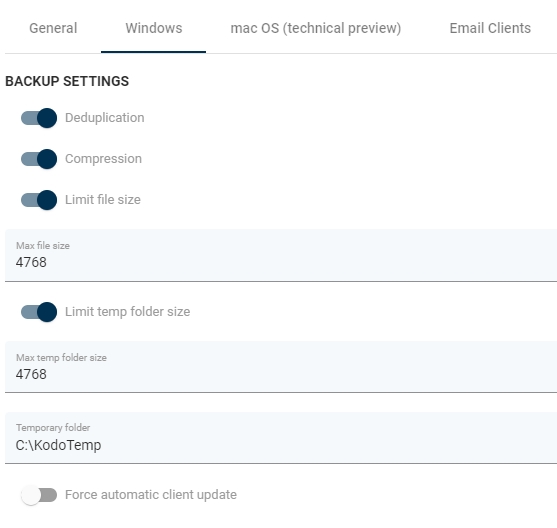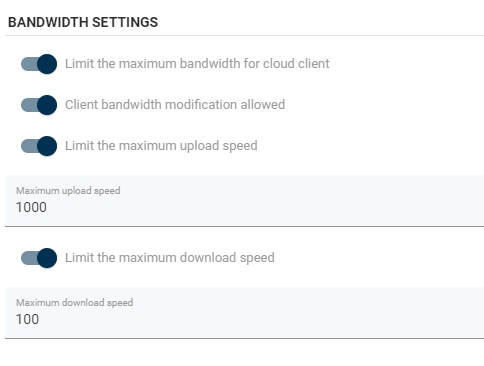WINDOWS
BACKUP SETTINGS
In this section you can set the following settings:
Deduplication - turn on or off data deduplication on the source (endpoint)
Compression - turn on or off data compression on the source (endpoint)
Limit file size - limit the size of the protected file (in MB or GB)
Limit temp folder size -limit the size of the Storware Endpoints temporary folder (in MB or GB)
Storware Endpoints temporary folder - set the location on the folder
Force automatic client update - if the option is set, the automatic Storware Endpoints client upgrade will take place during the endpoint reboot.

BANDWIDTH SETTINGS
In this section you can set the following settings:
Limit the maximum bandwidth for Storware Endpoints client
Client bandwidth modification allowed
Limit the maximum upload speed
Limit the maximum download speed

INCLUDE BACKUP SETTINGS
In this section, you can define directories and extensions to be included in the backup policy. To add a directory to protect, click the Add include directory button.
If you click on the arrow icon to the left of the Directory field, you can select a pre-configured directory path, such as:
User Profile
Desktop
My Documents
All Disks
Username
If you click on the arrow icon to the right of the Directory field, you can set the Include subdirectories option.

In the Extensions field, you can select one of the following extension sets:
Office documents
Video
Music
Photo
All files
Hidden files
In the end, you have to set the time you want to retain the data on the Storware Endpoints server. Set the retention period in the Retention field.
EXCLUDE BACKUP SETTINGS
In this section, you can define directories and extensions you want to be excluded from the backup policy. To add a directory to protect, click the Add exclude directory button.
If you click on the arrow icon to the left of the Directory field, you can select a pre-configured directory path, such as:
User Profile
Desktop
My Documents
All Disks
Username

If you click on the arrow icon to the right of the Directory field, you can set the Include subdirectories option.
In the Extensions field, you can select one of the following extension sets:
Office documents
Video
Music
Photo
All files
Hidden files